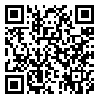BibTeX | RIS | EndNote | Medlars | ProCite | Reference Manager | RefWorks
Send citation to:
URL: http://jdisabilstud.org/article-1-3016-en.html
2- Associate Professor, Department of Counseling, Faculty of Humanities and Social Sciences, Ardakan University, Yazd, Ardakan, Iran
3- Assistant Professor, Department of Psychology, Faculty of Humanities and Social Sciences, Ardakan University, Yazd, Ardakan, Iran
Abstract
Background & Objectives: Extramarital relationships are among the most traumatic challenges in married life, which can cause severe disruption and even collapse the marital relationship. A qualitative and phenomenological approach can effectively explain this phenomenon since marital infidelity involves individual, social, and cultural dimensions. The present research attempted to comprehensively understand the factors contributing to and predicting marital affairs using a qualitative and content analysis approach. The current study used a qualitative approach and grounded theory to identify the factors involved in the background, strategies, and consequences of marital infidelity in Yazd City, Iran.
Methods: This study was conducted using a qualitative approach from March 2021 to March 2022. All couples whose cases were brought up in the Yazd Court of Justice due to extramarital relations and then referred to family counseling centers were included in the study. Sampling was carried out using snowball and semi–structured interview methods. The research samples were selected by purposive sampling and continued until the theoretical saturation limit was reached. After performing 15 interviews, data saturation was achieved. To analyze the data, we used axial coding.
Results: According to the results, 26.66% of the participants were male and 73.33% were female. The mean age of the participants was 32.06 years. Their mean duration of marriage was 8.26 years. About 20% of the participants had no children, and 80% had children. Infidelity was committed by the wife in 53.33% of cases and by the husband in 46.66% of cases. According to this study, the predisposing factors of marital infidelity were personality traits, sexual deviation, failure to meet needs and deficiencies. The research subjects also stated that spouse's mental disorders, cynicism, lying, jealousy, fear, irresponsibility, seeking diversity, loneliness, and lack of self–control are some of the characteristics that play a role in infidelity.
The contextual factors of marital infidelity in Yazd included communication, norm–breaking, and role modeling. Communication from the perspective of the study subjects refers to inappropriate communication between spouses and, in the next stage, points to the number of contacts of the cheating person with others. The contacts can occur at work, during drug use, or through virtual networks. Another factor raised by people was norm–breaking, which included domestic violence, addiction, concealment, and ogling. This study also showed that the underlying factors of marital infidelity were background, marriage, and existential inferiority.
Regarding the underlying causes of infidelity, important factors were childhood experience, witnessing arguments between parents, and having sexual experiences before marriage. The second underlying factor was marriage. In this regard, it was found that differences between couples in terms of religious beliefs, education level, and compulsive marriages were underlying factors of marital infidelity. Existential inferiority means that a person feels invisible and insignificant and tries to prove himself/herself to others differently. Its subcategories were comparing the spouse with others and humiliating the spouse.
Conclusion: According to the research results, marital infidelity is a cultural phenomenon that should be investigated in social and cultural contexts. These findings suggest that marital infidelity is not a one–dimensional phenomenon, and various factors, such as a person's personality, relationships, deficiencies as well as breaking norms in the family, modeling of other people, sexual deviations, background, existential inferiority, and type of marriage are involved in marital infidelity.
| Rights and permissions | |
 |
This work is licensed under a Creative Commons Attribution-NonCommercial 4.0 International License. |



